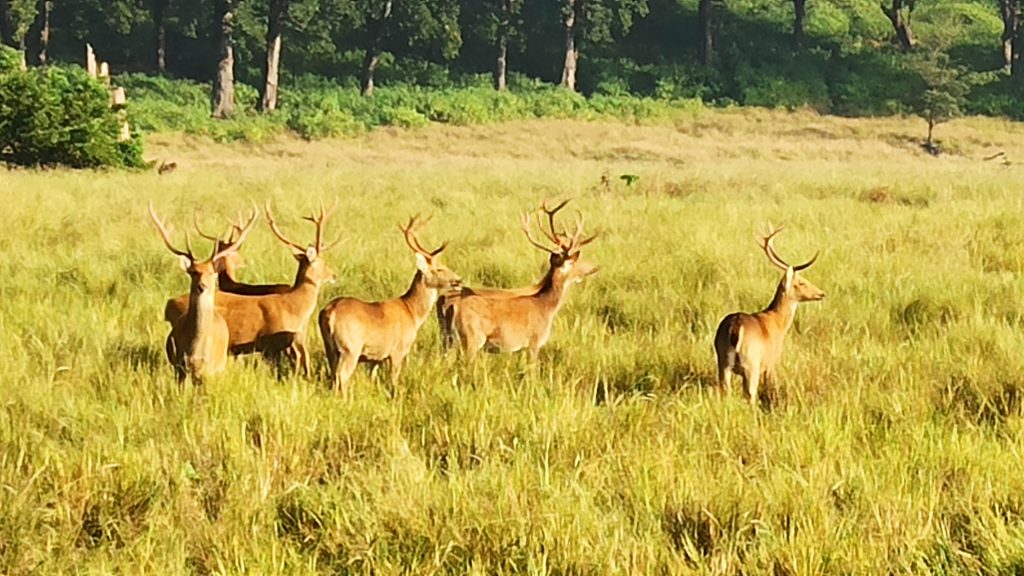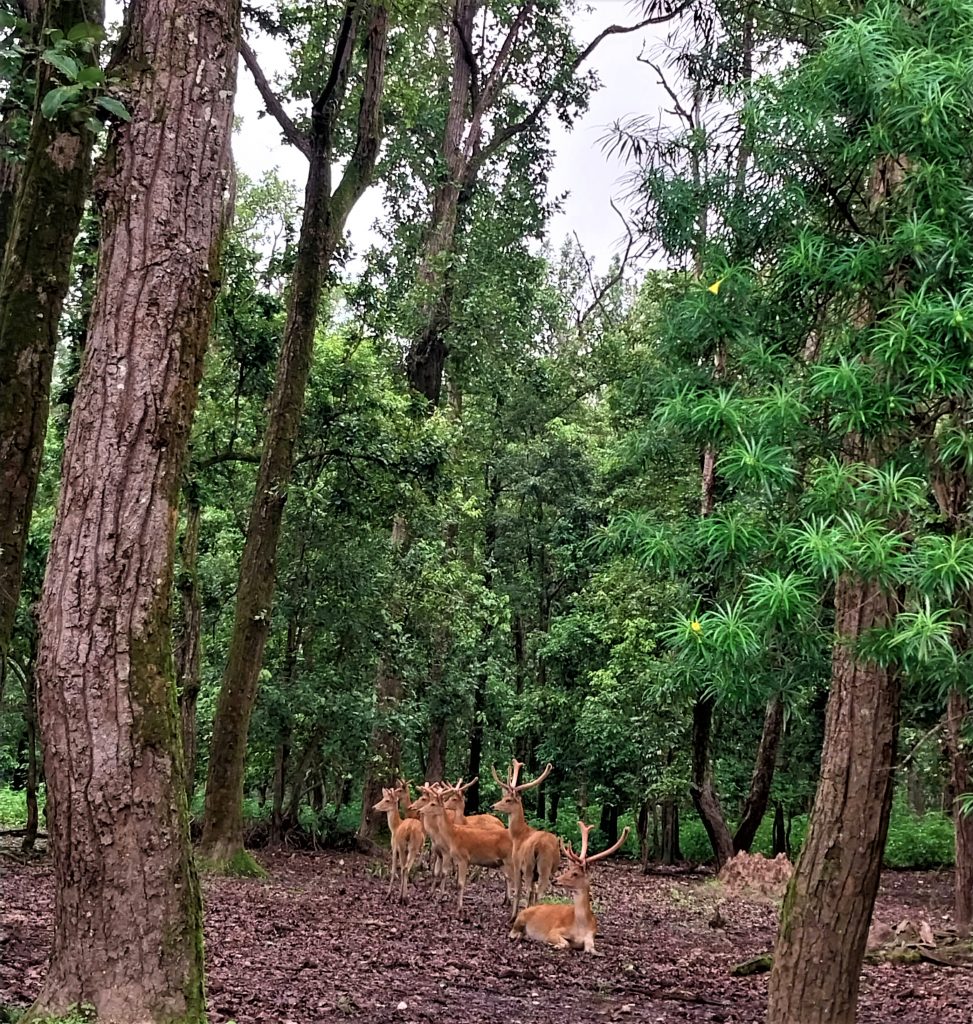
Kanha’s success story revolving around the barasingha recovery over the past five decades is nothing short of remarkable. From just about 66 animals in 1967, the population has now reached 1100, writes Deepanwita Gita Niyogi
At the Sondar patrolling camp inside the Kanha National Park and Tiger Reserve in Madhya Pradesh, forest guard Ram Bharose Masram came out carrying a binocular in his hands.
Masram, who has been working for six years, is still excited to spot the barasingha (Rucervus duvaucelii), also known as the hard ground swamp deer, in Kanha. “Forest guards like me watch over the animals and note down their activity on a daily basis. At times, we cover even 10 km on patrol duty,” Masram said while running for cover as sudden heavy rains blurred the vision and made barasingha sighting difficult.
Though Madhya Pradesh is known as India’s tiger state and tourists flock to Kanha for viewing the charismatic big cat, the reddish-orange barasingha with its beautiful antlers is the iconic animal of the national park. It is often spotted roaming the grasslands. The animal’s colour changes according to season. In monsoon, however, the hue is the brightest.
The barasingha is the official mascot of Kanha. In fact, the Bhoor Singh Public School run by the Kanha Workers’ Society is named in honour of the barasingha.
Recovery efforts
On the way towards Sondar, the driver stopped the vehicle at a point in Mukki range for a spectacular view. A barasingha herd was spotted, with a few animals seated on the grass; their soft velvety antlers looking lovely in the green foliage. Barasingha was once common in the central Indian landscape in the 1960s. But towards the end of that period about 66 animals were left in Kanha.
“As their population decreased to unviable levels, conservation was launched for a turnaround. As part of this, enclosures were constructed to ensure the safe breeding of the species. Today, the animals have increased in number and move about freely,” said Punit Goyal, deputy director of the Kanha Tiger Reserve.

Kanha has about 130 tigers. But the park’s success story revolving around the barasingha over the past five decades, is remarkable. From just about 66 in 1967, the barasingha population has now reached 1100. Though there is an ample number of spotted deer in Sondar, barasinghas are seen most often as the animals use a corridor of six km in length for movement.
The population jump has made translocation of the species an option. “From Kanha, barasinghas have been sent to other places like the Satpura Tiger Reserve and the Bandhavgarh National Park,” Kanha park superintendent Sanjeev Kumar Sharma said.
According to Goyal, if a species is confined to one location, there is a chance of it getting extirpated. To ensure its survival across the state, separate habitats for the barasingha were created. Till now, 98 animals have been sent to Satpura in three to four phases from 2018 onwards and 37 to Bandhavgarh.
Back at Sondar when the rain lessened in intensity, a male barasingha was spotted near a water body called the Sondar tank which dates back to British time. “The animals graze without any disturbance and feed on grass. There are over 100 animals in Sondar,” Masram added.
Kanha’s pride
Adjusting the focal length of the binocular revealed a solitary male barasingha with soft antlers at Sondar. Masram explained that when the antlers are soft, the males stay away from the herd. From the third week of April, the males start shedding their antlers and then from May end once more the antlers start growing.
In Kanha, barasingha conservation started even before Project Tiger was launched in 1973. This was after the relocation of Sounf village. To protect mothers and newborns, fences were erected.
For the females, the fawning season starts from August- September. “At this time, the females are kept inside fences so that jackals do not eat the newborns. The babies take 48 hours to become active after birth. Depredation of barasingha fawns was the main reason behind the dip in population,” Sharma pointed out.
Besides ensuring corridors for free movement of the barasingha, enclosures have been constructed at a few places in Kanha Tiger Reserve to protect the mothers. The enclosure in Kanha range is spread over 50 hectares.
Daily counting of the animals is carried out, said beat guard Ramesh Rahangdale. However, due to tiger movement near the enclosure, barasingha is not there at present in the Kanha range. From January till August, 16 barasinghas have been killed by tigers. “We observe the kills, and hence, know how many barasingahs have been killed,” Rahangdale added.
In Kanha, the barasingha population has 60 percent females which is a good sign. Sharma assured that the enclosures would be maintained as the park management wanted to increase the number even further.
Jodha Baiga, an Adivasi man, looks after female barasinghas and deeply cares for them. Besides jackals, the threat to barasingha babies is also from pythons.
“We ensure python-proof fencing for their survival. Jodha used to catch pythons to protect the fawns. When the survival rate of fawns increases, the population automatically rises. Kanha has an old barasingha enclosure inside which a boma was constructed later. This was used for the capture and translocation of the animals to Van Vihar National Park in Bhopal, besides Satpura and Bandhavgarh,” Goyal said.












